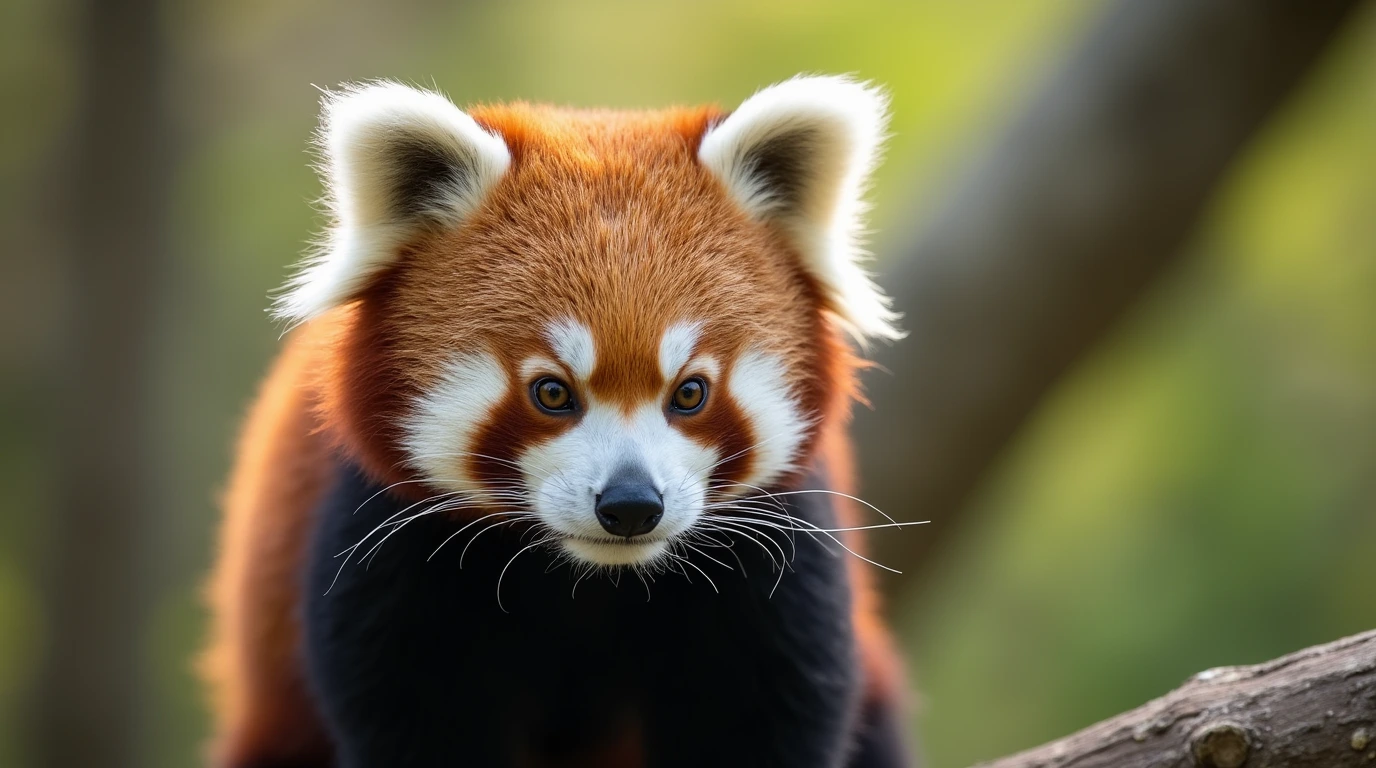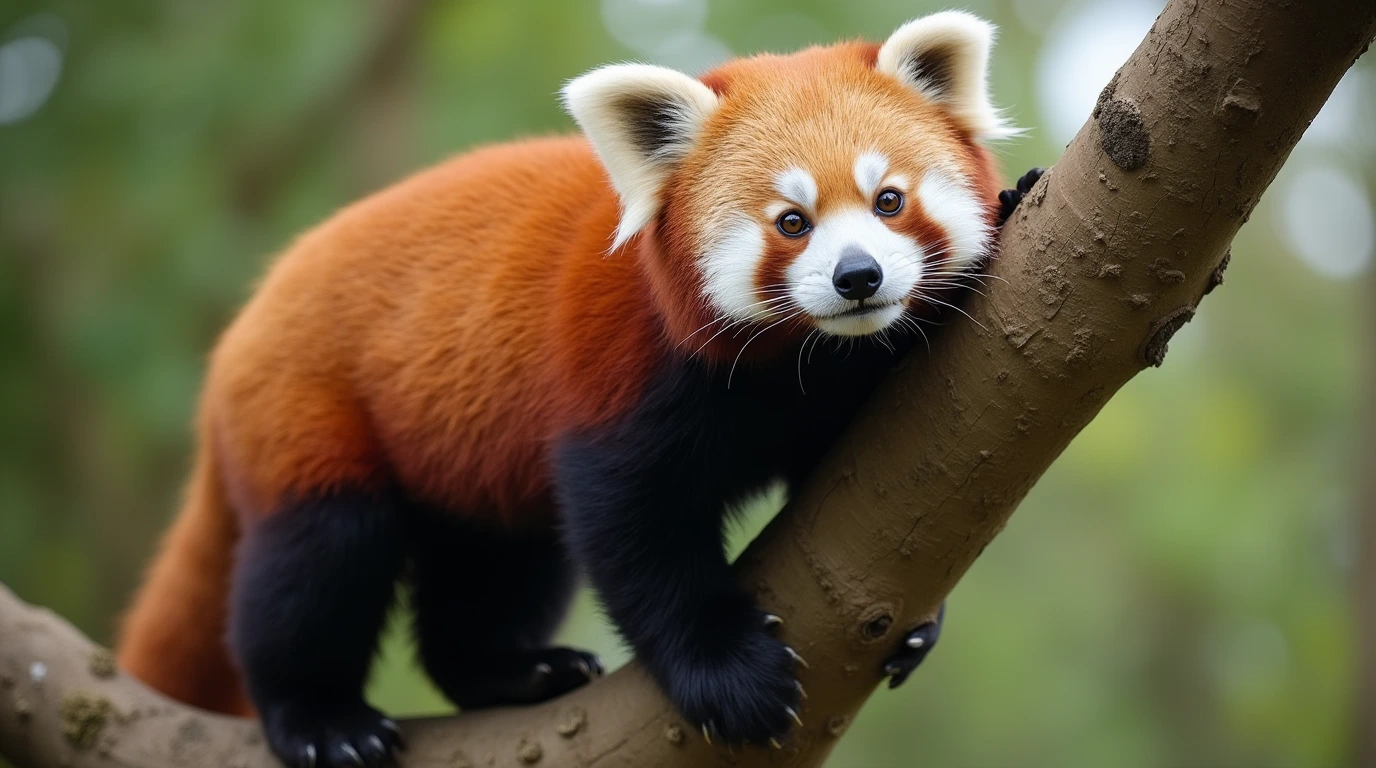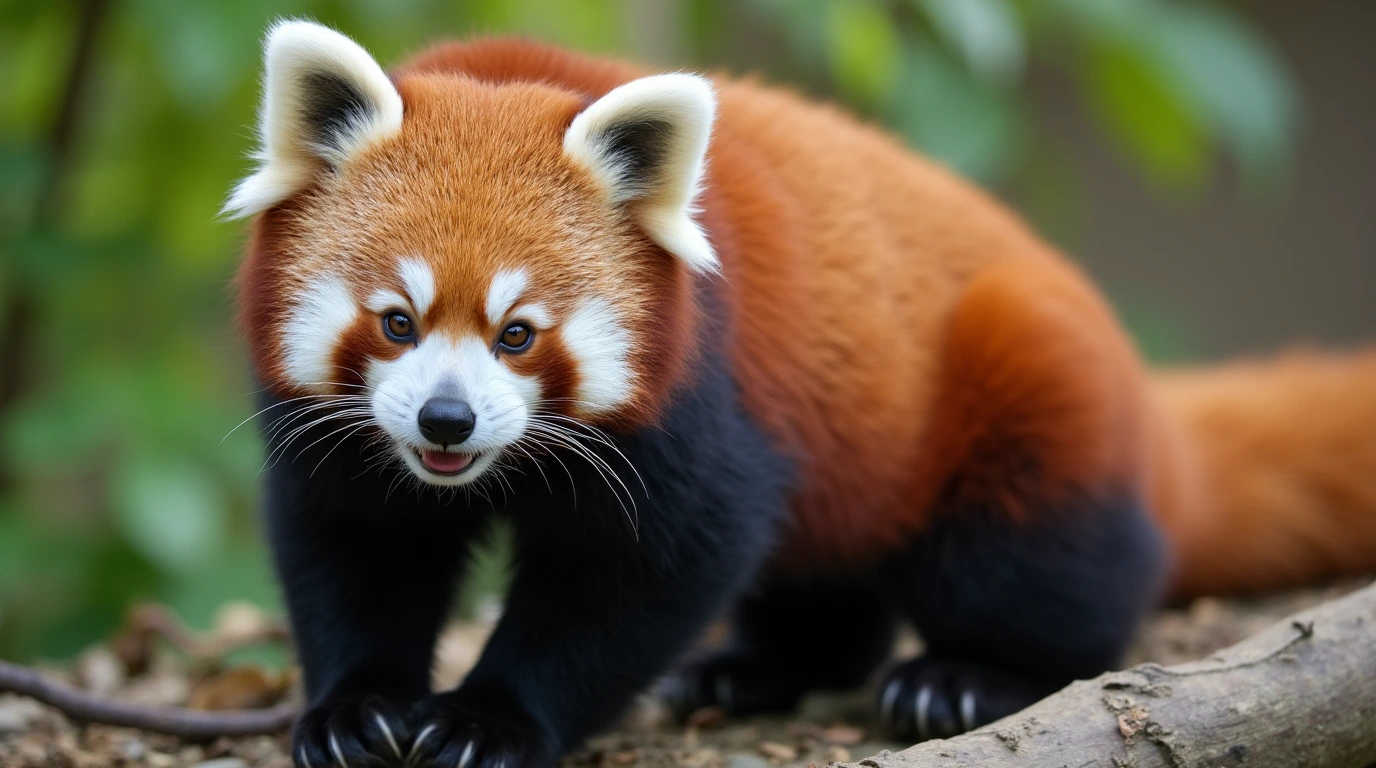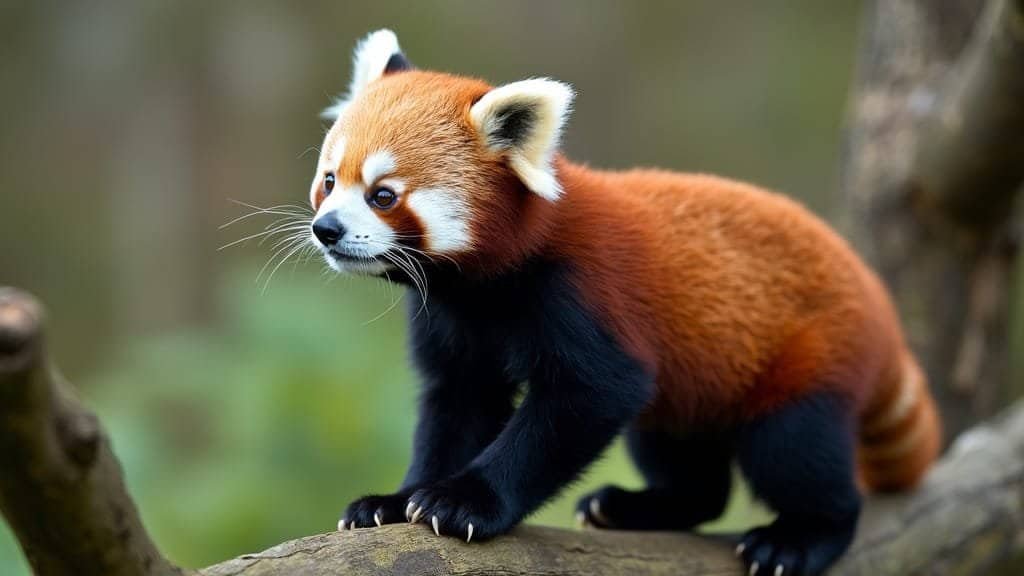Conservation breeding programs are a critical safeguard for the future of red pandas, an endangered species facing severe threats in the wild. These carefully managed efforts go far beyond simply raising animals in captivity—they focus on preserving genetic diversity, ensuring population stability, and preparing individuals for potential reintroduction into protected habitats
With coordination from international networks such as the Species Survival Plan (SSP) and the Global Species Management Plan (GSMP), red panda breeding centers and zoos around the world are working together to support both ex-situ and in-situ conservation goals. In this article, we’ll explore how these breeding programs maintain healthy red panda populations, aid in rewilding, and educate the public while advancing global collaboration for long-term species survival
Objectives and Strategies of Red Panda Conservation Breeding Programs

Red panda conservation breeding programs are designed with the long-term survival of the species in mind, both in captivity and in the wild. These programs form the foundation of global efforts to prevent the extinction of red pandas by preserving their genetic integrity, supporting healthy populations, and ensuring that individuals can contribute meaningfully to both education and potential reintroduction. Central to this mission are clearly defined objectives—managing population genetics, enhancing reproductive success, and aligning zoo-based activities with in-situ conservation strategies across red panda range countries
Maintaining Genetic Diversity Through Studbooks and Genetic Analysis
One of the core strategies in conservation breeding is the maintenance of genetic diversity, which is essential to the adaptability, health, and reproductive viability of a species. Red pandas, being small in number and highly localized in their native habitats, face a significant risk of inbreeding depression. To address this, breeding programs use studbooks—comprehensive genetic registries that track every known red panda born in captivity
These studbooks, often managed by institutions like the Association of Zoos and Aquariums (AZA) in the U.S. and the European Association of Zoos and Aquaria (EAZA), enable zoo professionals to pair animals based on genetic compatibility. By doing so, the programs reduce the likelihood of recessive genetic disorders and maintain a balanced, diverse gene pool. Each individual’s ancestry is carefully analyzed using both pedigree records and modern molecular techniques such as microsatellite DNA analysis and whole-genome sequencing
The Global Species Management Plan (GSMP) for red pandas, overseen by the World Association of Zoos and Aquariums (WAZA), coordinates these efforts across continents. It ensures that zoos in North America, Europe, Asia, and Australia collaborate effectively by sharing individuals, genetic data, and breeding outcomes. This level of coordination is essential given that the global captive population is relatively small—approximately 300 to 400 individuals worldwide, according to GSMP estimates
Conservation breeding programs also play a preemptive role by banking genetic material. Some facilities participate in biobanking initiatives—freezing sperm, eggs, and even somatic cells for future use in artificial insemination or cloning. The Padmaja Naidu Himalayan Zoological Park in India, a leader in red panda conservation breeding, has established a “frozen zoo” where red panda DNA is preserved for future genetic interventions
Leading Institutions in Red Panda Captive Breeding Initiatives
Several zoos and breeding centers are recognized globally for their leadership in red panda conservation. The Smithsonian National Zoo in Washington, D.C., for instance, is a key participant in the SSP and conducts long-term research on red panda behavior and breeding. They’ve developed protocols for managing estrus cycles, facilitating mating introductions, and monitoring neonatal development—protocols that are now used by other institutions
Taronga Zoo in Australia has bred over 40 red pandas since the 1970s, making it one of the most successful red panda breeding centers in the Southern Hemisphere. Their program integrates animal husbandry, veterinary medicine, and environmental enrichment to enhance reproductive outcomes
In Asia, the aforementioned Padmaja Naidu Himalayan Zoological Park has both in-situ and ex-situ components. It not only maintains one of India’s largest captive populations but also reintroduces red pandas into protected forest areas like Singalila National Park. Their work is uniquely positioned at the intersection of breeding and wild population reinforcement
Additionally, many smaller AZA-accredited institutions in the U.S.—such as the Cincinnati Zoo, John Ball Zoo, and Lincoln Children’s Zoo—participate actively in the SSP. They exchange red pandas based on genetic recommendations, contribute data to regional studbooks, and help educate the public about the role of captive breeding in species recovery
To explore how zoos collaborate globally to preserve red panda genetics, the WAZA Global Species Management Plan outlines how coordinated breeding supports long-term survival goals through international planning and resource sharing
Reintroduction Efforts and Success Stories

While captive breeding is a vital tool for ensuring species survival, its ultimate value is magnified when it leads to successful reintroduction—placing animals born under human care back into protected, natural habitats. For red pandas, reintroduction is both a conservation strategy and a powerful symbol of restoration. These efforts aim not just to bolster wild populations, but also to re-establish ecological balance in regions where red pandas have been extirpated or severely reduced
Case Studies of Successful Red Panda Reintroductions
One of the most notable examples of red panda reintroduction comes from India, where the Padmaja Naidu Himalayan Zoological Park in Darjeeling has led a decades-long initiative to return captive-bred red pandas to the wild. Beginning in the late 1990s, the program focused on Singalila National Park, a protected area in the Eastern Himalayas with suitable bamboo forest and minimal human encroachment
Reintroduction candidates undergo a rigorous selection process to assess their genetic fitness, health status, and behavioral suitability. Once identified, individuals are transferred to large soft-release enclosures located within or adjacent to the target reintroduction site. Here, they undergo acclimatization—a period during which they adapt to local climate, terrain, and diet under semi-wild conditions while being monitored for stress, activity levels, and interaction with their surroundings
Since the program’s inception, several red pandas have been successfully released into Singalila, where they have been tracked using radio collars and direct observation. Follow-up monitoring indicates that these animals adapt well, establish territories, and in some cases, reproduce in the wild—confirming the potential of captive-bred pandas to contribute meaningfully to population recovery
Similar projects are now being explored in Bhutan and Nepal, although these are at earlier stages and focus primarily on habitat preparation and feasibility assessment. The long-term goal is to expand red panda range and gene flow through strategic releases into protected and connected habitats
Pre-Release Training and Behavioral Monitoring
Reintroduction success hinges on how well animals are prepared for survival in the wild. For red pandas, this means more than just physical health—it involves behavioral readiness. In captivity, red pandas are often exposed to enrichment devices and naturalistic enclosures to maintain their instincts. However, before release, they undergo specific behavioral assessments to ensure they can climb efficiently, recognize predators, forage independently, and exhibit territorial behavior
Some breeding centers simulate natural environments with varied terrain, tree structures, and bamboo clusters to mimic what red pandas will encounter in the wild. These pre-release facilities help scientists observe whether individuals show adequate mobility, scent-marking, and den selection—skills vital to territorial establishment and mating
Animals showing signs of excessive dependency on humans, abnormal stress behaviors, or physical limitations are generally not considered for release. Instead, they may remain in breeding programs as contributors to genetic diversity
Veterinarians and wildlife biologists also monitor hormone levels and reproductive cycles to determine the ideal time for release. By aligning the release window with optimal environmental conditions—such as the bamboo flowering cycle or dry-season food availability—conservationists increase the chances of survival and integration
Technology plays a key role in post-release monitoring. Collars with VHF or GPS transmitters are used to track movement, habitat use, and survival outcomes. These data inform future reintroductions by identifying best practices, potential barriers, and areas of high conservation value
For a detailed overview of the reintroduction process and its conservation impact, the National Zoo’s red panda profile includes information on captive care, behavior, and conservation research that supports wild population recovery
Veterinary Care and Health Management in Breeding Programs

Veterinary science is a cornerstone of every successful red panda conservation breeding program. Ensuring that individuals are healthy, behaviorally fit, and genetically viable requires a comprehensive approach to preventative care, diagnostics, and treatment. From neonate assessments to geriatric care, red panda breeding programs depend on veterinary teams to support the health and reproductive potential of every animal, while also contributing essential knowledge to both captive and wild conservation efforts
Role of Veterinary Interventions in Red Panda Conservation
Veterinarians in breeding facilities perform a wide range of critical tasks that go far beyond basic medical treatment. They oversee reproductive health, conduct regular wellness exams, and manage vaccination and parasite control schedules. One of their most important responsibilities is supporting breeding success through fertility monitoring and prenatal care
For female red pandas, reproductive hormones are closely monitored using fecal or blood assays to determine optimal breeding times. If natural mating does not occur, artificial insemination may be used, particularly in genetically valuable pairs. In males, semen collection and analysis help assess reproductive viability, especially in older or underperforming individuals
Veterinary teams also conduct neonatal exams on red panda cubs shortly after birth. These assessments help detect congenital defects, monitor weight gain, and ensure that cubs are nursing properly. Early detection of problems allows for timely intervention, increasing survival rates in captive-born litters
Surgical procedures are occasionally required, including dental corrections, fracture repair, or exploratory exams when internal conditions are suspected. In all cases, veterinary records contribute to shared international databases, helping identify patterns in disease or reproductive health across the global captive population
At institutions like the Smithsonian National Zoo, veterinary specialists work hand-in-hand with animal nutritionists and behaviorists to create integrated health profiles. This team approach maximizes the chances of breeding success while ensuring that each red panda is in peak physical condition
Monitoring and Ensuring Health of Captive Red Pandas
Health monitoring in breeding programs is both proactive and ongoing. Each red panda undergoes regular physical exams that include blood work, dental evaluations, body weight tracking, and behavioral assessments. These data points allow caretakers to detect subtle signs of stress, illness, or nutritional imbalances before they escalate
Advanced diagnostic tools like digital radiography, ultrasound, and endoscopy are increasingly used to screen for internal abnormalities or confirm pregnancies. Zoos with state-of-the-art veterinary hospitals, such as the Columbus Zoo and Aquarium, conduct annual health exams for every red panda in their care—ensuring that any medical issues are addressed promptly
Nutrition is also tightly controlled. Red pandas require a bamboo-rich diet supplemented with specialized biscuits and fresh produce. Dietary plans are tailored to life stage, reproductive status, and activity level, ensuring optimal nutrient intake and body condition
Quarantine protocols are another critical component of health management. All red pandas being transferred between institutions are held in isolation for a period (typically 30–45 days) to prevent disease transmission and allow for thorough health evaluations. This practice is especially important for individuals involved in international breeding transfers or reintroduction initiatives
Veterinary research in zoos also informs conservation efforts in the wild. For instance, data on red panda dental disease, parasitic loads, and common bacterial infections are shared with wildlife rescue centers in Nepal and India. In this way, the insights gained from captive animals directly benefit field medicine and emergency rehabilitation
Images like those from Perth Zoo or Chicago Zoological Society—where red pandas are shown receiving health checks—serve to illustrate how veterinary care is not only vital but deeply embedded in conservation science
Global Collaborations and Public Engagement

No conservation breeding program exists in isolation. The strength and long-term impact of red panda breeding efforts come from the collaboration between zoos, conservation networks, governments, and the general public. These partnerships ensure that breeding programs are strategically aligned, resources are efficiently used, and that awareness and funding for red panda conservation are sustained across borders
International Partnerships in Red Panda Breeding Programs
The success of red panda conservation breeding relies heavily on international coordination through organizations like the Global Species Management Plan (GSMP) and regional species survival plans such as the SSP (Species Survival Plan) in North America and the EEP (European Endangered Species Program) in Europe. These frameworks bring together over 100 institutions that share genetic, medical, and behavioral data to optimize breeding outcomes globally
Red pandas are transferred between zoos under strict genetic recommendations based on pedigree analysis and species health goals. These movements ensure that no population becomes genetically isolated and that the species as a whole remains resilient. The exchanges are planned years in advance, accounting for zoo capacity, infrastructure, and long-term conservation planning
Major participants in these partnerships include the Smithsonian National Zoo, Rotterdam Zoo, Padmaja Naidu Himalayan Zoological Park, Taronga Zoo, and many AZA and EAZA institutions. These facilities contribute not just animals, but also scientific leadership, veterinary expertise, and education resources
In some cases, zoos co-fund conservation activities in red panda range countries. For example, through partnerships with the Red Panda Network, zoos like John Ball Zoo and Pittsburgh Zoo help fund in-situ activities including habitat restoration, stove distribution, and anti-poaching patrols. These efforts align ex-situ (captive) work with on-the-ground field conservation, creating a holistic approach to species recovery
Educational Outreach and Public Awareness Initiatives
Public engagement is a critical pillar of red panda breeding programs. Zoos serve as the primary interface between the public and the conservation community, offering opportunities for learning, emotional connection, and action. Educational programs focused on red pandas use exhibits, signage, and staff-led talks to convey conservation messages to millions of visitors annually
During events like International Red Panda Day, breeding centers organize interactive workshops, behind-the-scenes tours, enrichment demonstrations, and adoption drives. These events not only raise awareness but also generate funding that supports breeding and field programs.
Red panda exhibits typically include multimedia content that explains the role of captive breeding, habitat loss, and the importance of forest connectivity. Many facilities also feature QR codes linking visitors to symbolic adoption programs, donation portals, and updates from red panda range countries
Breeding centers often collaborate with schools, offering downloadable curriculum materials and virtual learning sessions. These initiatives help educate the next generation of conservationists and build long-term public support
Social media also plays a growing role. Viral content—such as the birth of red panda cubs or enrichment videos—helps spark global interest and reach audiences who may never visit a zoo in person. Many zoos now include conservation calls-to-action alongside viral posts, directing followers to donation links or environmental pledges
This global community, fueled by zoos and their educational outreach, forms the cultural and financial backbone of red panda breeding programs. Without it, long-term survival strategies would lack the necessary visibility, funding, and societal support. To see how public engagement supports real-world conservation, visit the Red Panda Network’s article on the role of zoos in red panda conservation, which highlights how international breeding and outreach connect directly to field results











